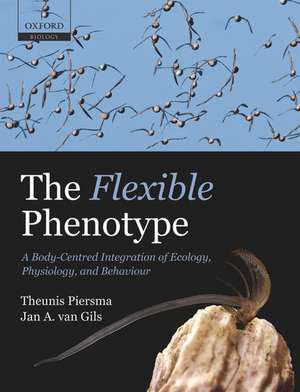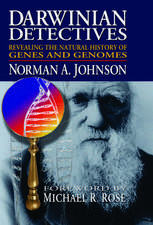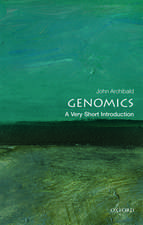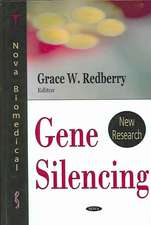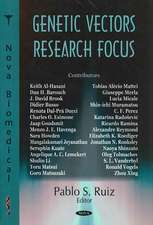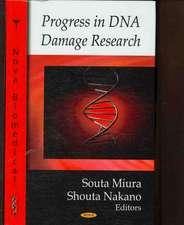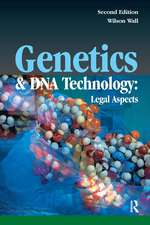The Flexible Phenotype: A Body-Centred Integration of Ecology, Physiology, and Behaviour
Autor Theunis Piersma, Jan A. van Gilsen Limba Engleză Paperback – 4 noi 2010
Preț: 449.85 lei
Preț vechi: 582.42 lei
-23% Recomandat
Puncte Express: 675
Preț estimativ în valută:
79.67€ • 93.04$ • 69.21£
79.67€ • 93.04$ • 69.21£
Carte tipărită la comandă
Livrare economică 20 februarie-03 martie
Preluare comenzi: 021 569.72.76
Specificații
ISBN-13: 9780199597246
ISBN-10: 0199597243
Pagini: 250
Ilustrații: 120 black and white illustrations
Dimensiuni: 190 x 247 x 13 mm
Greutate: 0.55 kg
Editura: OUP OXFORD
Colecția OUP Oxford
Locul publicării:Oxford, United Kingdom
ISBN-10: 0199597243
Pagini: 250
Ilustrații: 120 black and white illustrations
Dimensiuni: 190 x 247 x 13 mm
Greutate: 0.55 kg
Editura: OUP OXFORD
Colecția OUP Oxford
Locul publicării:Oxford, United Kingdom
Recenzii
The book does an excellent job of covering a large range of interesting topics in an approachable way.
This book is not simply a list of examples of how integration has helped us understand some behavioral problem; rather, it is more of a guide for using integration to investigate behavior as a vehicle for phenotypic flexibility. The integration that facilitates this process is difficult to practice. For the work of Piersma and van Gils, it requires expertise in physiology, behavior, and ecology, and, as these authors point out, attempting to be a jack of all of these trades runs the risk of mastering none of them. With their new book, Piersma and van Gils clearly demonstrate mastery not only at the three components of their integration, but also at the very process of integration, which is long overdue to be recognized as a trade in and of itself.
The text is written engagingly, where each of the ten richly illustrated and concise chapters adds more depth to the integrated story...The book is written for graduate level students and researchers in the fields of physiology, behavioural ecology, and evolutionary biology. However, due to its attractive writing and lay-out this book will also appeal to a more general audience.
This book is not simply a list of examples of how integration has helped us understand some behavioral problem; rather, it is more of a guide for using integration to investigate behavior as a vehicle for phenotypic flexibility. The integration that facilitates this process is difficult to practice. For the work of Piersma and van Gils, it requires expertise in physiology, behavior, and ecology, and, as these authors point out, attempting to be a jack of all of these trades runs the risk of mastering none of them. With their new book, Piersma and van Gils clearly demonstrate mastery not only at the three components of their integration, but also at the very process of integration, which is long overdue to be recognized as a trade in and of itself.
The text is written engagingly, where each of the ten richly illustrated and concise chapters adds more depth to the integrated story...The book is written for graduate level students and researchers in the fields of physiology, behavioural ecology, and evolutionary biology. However, due to its attractive writing and lay-out this book will also appeal to a more general audience.
Notă biografică
Theunis Piersma is Professor of Animal Ecology at the University of Groningen and a senior research scientist with the Royal Netherlands Institute for Sea Research (NIOZ) on Texel. Together with his internationally oriented research teams at Groningen and Texel he investigates how the distribution and numbers of shorebirds and meadowbirds are a function of climate, food, predators, pathogens, as well as the historic-genetic background of the respective species and populations. He has co-authored several books and published about 300 refereed research papers. In 2004 he received the Three-annual Prize for Nature Conservation from the Prince Bernhard Culture Fund, the Ornithologenpreis of the German Ornithologists' Society and the first Luc Hoffmann Medal for Excellence in wetland science and conservation of Wetlands International. He was elected to the Royal Netherlands Academy of Arts and Sciences (KNAW) in 2009.Jan A. van Gils studied biology at the University of Groningen. His PhD thesis (2004) on Red Knots focused on foraging decisions during the non-breeding season and how optimal choices co-vary throughout the year with a migrant's flexible body. In his current position as a research scientist at NIOZ, Jan studies the distributional ecology of avian migrants at the individual level, and how their foraging impacts community functioning. He often takes a theoretical approach, building and testing models based on measurements collected in the field, but also under controlled conditions in the laboratory. Although his studies are curiosity-driven, they find their applications in societal issues such as habitat destruction, global warming and bird flu. Recently awarded a prestigious VIDI-grant from the Netherlands Organization for Scientific Research (NWO), his publication record meanwhile includes about 35 peer-reviewed papers.
